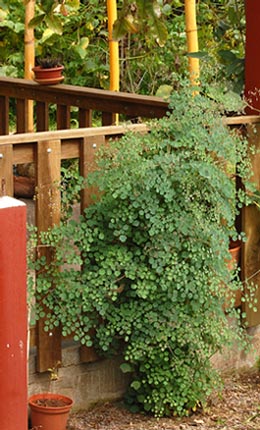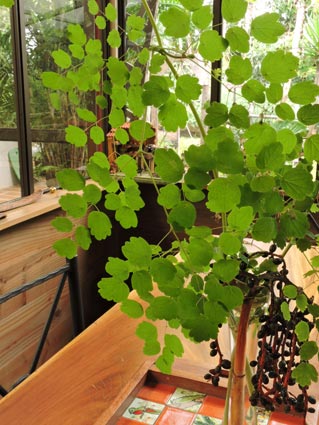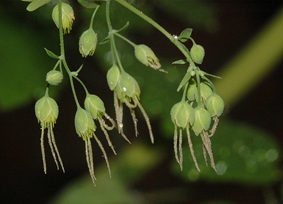 |
QUICK SEARCH
MO PROJECTS:
Africa
Asia/Pacific
Mesoamerica
North America
South America
General Taxonomy
Photo Essays
Training in Latin
America
MO RESEARCH:
Wm. L. Brown Center
Bryology
GIS
Graduate Studies
Research Experiences
for Undergraduates
Imaging Lab
Library
MBG Press
Publications
Climate Change
Catalog Fossil Plants
MO DATABASES:
W³MOST
Image Index
Rare Books
Angiosperm
Phylogeny
Res Botanica
All Databases
INFORMATION:
What's New?
People at MO
Visitor's Guide
Herbarium
Jobs & Fellowships
Symposium
Research Links
Site Map
Search
|
Draft Treatments | Guidelines | Checklist | Citing | Editors The Cutting EdgeVolume XXVII, Number 3, July 2020News and Notes | Leaps and Bounds | Germane Literature | Season's Pick | Annotate your copy Thalictrum lankesteri Standl. (Ranunculaceae) is one of our favorite “fernoid” flowering plants, at a glance much resembling some species of Adiantum (Pteridaceae).
Not only do they make striking yard plants (though invisible in the dry season), their cut stems, placed in a vase of water, last remarkably long (after 12 days now, still as fresh as new!). This is the season it flourishes, and the several plants Manual co-PI Barry Hammel has growing (wild-collected rhizomes from the Cerros de Escazú, above Santa Ana) are flowering now. The sp. was reported in Francisco Morales’s Manual treatment as “dioica o subandrodioica.” Curiously, flowers of both of Hammel’s fertile plants all appear to have functional staminate and pistillate parts. Two out of three is a small sample (one of his plants has yet to flower), but perhaps hermaphroditic individuals are more common in populations than staminate ones. One might ask why any of the latter exist; if the hermaphrodite plants really do produce viable seed, wouldn’t staminate plants be a wasted investment? The flowers are strongly protogynous, with the young stamens barely visible when the styles are prominent and sparkling in the breeze. See more photos at Hammel’s Flickr site.
|
© 1995-2025 Missouri Botanical Garden, All Rights Reserved
4344 Shaw Blvd.
St. Louis, MO 63110
(314) 577-5100
Technical Support


